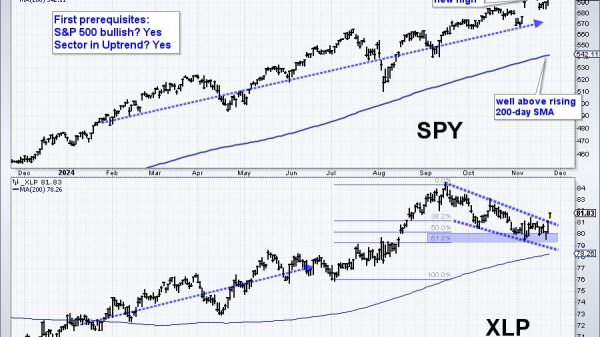Jeffrey Miron and Jacob Winter
This article appeared on Substack on July 27, 2023.
In fiscal year 2022, the federal government spent $76 billion subsidizing nondefense, scientific research. This component of federal expenditure is modest relative to the $6.27 trillion total or the $632.7 billion private sources spent on research and development in 2021. It nevertheless merits scrutiny.
The standard argument for these subsidies distinguishes two types of research.
Basic research expands human knowledge but without easily captured commercial benefit. Examples include probing the origins of the universe, the composition of protons, or the fundamental laws of physics. Once known, these “pure ideas” spread easily, so the creator cannot earn a monetary return.
Applied research generates marketable innovation: improved crop production, treatments for specific diseases, or improved energy efficiency. Crucially, according to the standard model, this research builds on the theoretical foundations derived from basic research.
Without subsidies for basic research, therefore, applied research might suffer.
This model of the innovation process plausibly describes much innovative activity (or lack thereof). Yet the standard model is not the whole story.
Many scientists (e.g., Michael Faraday) investigate for the joy of discovery, not to earn a financial return. Further, many esteemed inventors received no government funding, including Thomas Edison, Nikola Tesla, and the Wright brothers (who were competing with government funding to the Smithsonian Institution to develop aircraft).
Even if financial incentives are important for generating basic research, moreover, universities and private charity provide alternative sources of funding. At institutions of higher learning, including ones historically funded privately, scientists earn a living by teaching, while getting time for their research.
Private charity also funds basic research. The American Cancer Society, 100 years old this year, collects personal donations and invested more than $145 million in cancer research in 2022, and more than $5 billion since 1946. Its history suggests that private charities are willing to invest in research that government might avoid. When the ACS was founded, it was taboo to even discuss cancer in public.
Private charities fund numerous areas of research. The Howard Hughes Medical Institute funds about $660 million in medical research per year, and countless charities focus on specific diseases (the Alzheimer’s Association, $90 million in 2022; the Parkinson’s Foundation, $24.9 million). The Bill & Melinda Gates Foundation distributed $3.6 billion in 2021 for global health research and development. Additional examples include the Alfred P. Sloan Foundation (economics, energy, the environment, and physics; $48.1 million in 2022), the Andrew W. Mellon Foundation (arts and humanities; $592 million), and the Ford Foundation (drivers of socioeconomic and political inequality; $713 million).
Moreover, much innovation does not rest directly on basic research: Microsoft Windows, TurboTax, and the iPhone did not spawn from some grand theory but instead grew from ongoing trial‐and‐error processes in response to pressing needs.
Regardless of these issues, the long‐term record suggests little impact of federal research funding on the U.S. economy. The graph below plots real GDP per capita since 1870 along with federal nondefense research and development spending since 1949, when the government began reporting this statistic. Funding existed prior to 1949 but was small and embedded in other parts of the budget; in 1940, it was under $105 million (in 2012 dollars).
The growth of GDP per capita seems unaffected even as research funding rose dramatically following World War II. The average annualized growth rate of real GDP per capita was 1.96 percent between 1870–1948 and 2 percent between 1949–2022.
Thus, the standard model likely overstates the need for government funding to generate innovation. In addition, government funding generates substantial costs beyond its monetary expenditure.
If government funds research, it must decide which projects to fund, allowing political forces to influence the choice. President George W. Bush limited federal funding for stem cell research that used human embryos in response to pressure from anti‐abortion forces. The recent affirmative action case against Harvard is a legal issue because Harvard accepts federal research funding. The National Institute on Drug Abuse has been criticized for displaying bias in favor of drug prohibition.
Another concern is that a central source of funding may limit which projects can access funds, reducing research variety. Special interest groups can successfully lobby for funding that supports their research even if it is not the most deserving. Indeed, private research funding is distributed more widely: between 2010 and 2019, 200 organizations received 80 percent of NIH and NSF grants, whereas the top 200 recipients of private funding received only 33 percent of donations. Scientists have explained how private funding has enabled them to explore new ideas, adjust budgets, and avoid lengthy bureaucratic approval processes.
Finally, much government funding goes toward applied, not basic, research. In FY 2022, 38 percent of nondefense federal R&D funds were earmarked for applied research. This piece cannot be justified on the grounds that private actors will systematically undersupply it due to a lack of monetary incentive.
Milton Friedman famously argued for abolishing the National Science Foundation, the National Institutes of Health, and all government funding of higher education (even though his own field received funding). Friedman believed that private sources would fund science, as evidenced by major research that took place before government research funding began. He also believed the efficiency and quality of research would improve when privately funded because government officials’ goals divert research from the topics that fit researchers’ talent and interests.
We agree.























